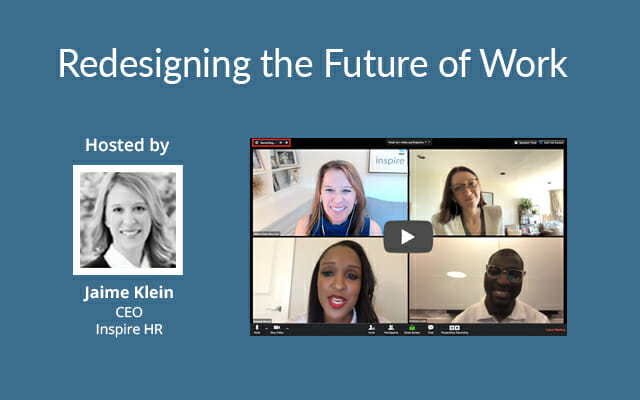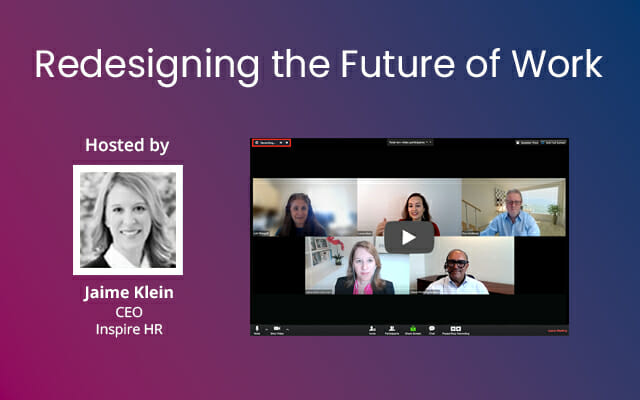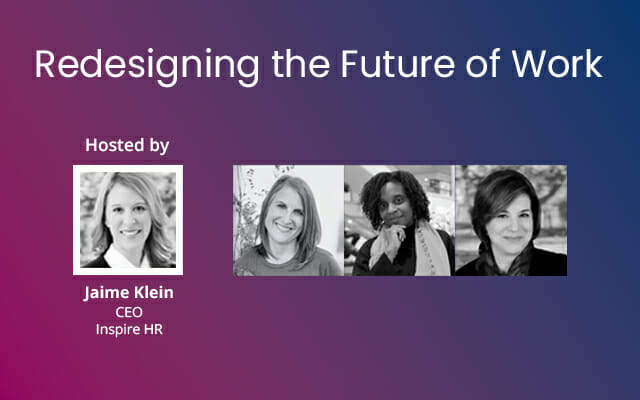
3 Ways to Attract Diverse Job Candidates
MAY 25, 2021
Ask any recruiter to name their top priorities and you’re bound to hear “recruiting for diversity,” “reducing bias in hiring,”hiring for diversity,” or “how to attract diverse job candidates.” For 78% of talent professionals and hiring managers, diversity is the number one priority.
We’ve shared stats and examples of the proven link between advancing Diversity, Equity, Inclusion, and Belonging (DEIB) and increased employee engagement, productivity, and ultimately profits (to the tune of a 19% boost!)—both the human case and the business case. There is an equally strong correlation for DEIB throughout the hiring process, which is one that strengthens the employer brand (and makes it easier to recruit diverse candidates for subsequent roles).

According to Glassdoor’s September 2020 “Diversity and Inclusion Workplace Study,” 76% of job seekers report that diversity and inclusion is an important factor when evaluating potential employers, and more than one-third of job seekers would not apply to a company where BIPOC employees report lower job satisfaction than white peers.
As every recruiter and hiring manager knows, though, recruiting for diversity is not as simple as deciding to diversify your slate of candidates. We hear from companies of all sizes that are struggling to find candidates from under-represented communities. One of the most common questions within Human Resources and business circles today is: “How do we source diverse candidates?” Here are our top three tips.
3 Ways to Attract Diverse Job Candidates
1. Focus on community-building (not transactional) relationships with professional groups and HBCUs.
The key points here are relationships and community. Posting to a job board is one thing, but forming relationships with leaders of groups like Black Professionals in Tech Network (BPTN), Women in Tech, ALPFA, and Ascend is what sets you apart from companies looking for a marketing opportunity on a listserv. Be present at networking events, arrive early and stay late to be accessible, host lunch and learns, or offer job shadowing opportunities.
Barbara L. Adams, business school dean and an accounting professor at South Carolina State University shares how, as a leader of an HBCU, she encourages company representatives to forge relationships with the faculty and keep the relationship bidirectional. She cites BMW and Boeing as companies who engage in guest lectures at SCSU and also fund scholarships.
Dr. Adams’ advice is echoed by Harold Bell, director of career planning and development at Spelman College. Earlier this year, during a virtual event with representatives from more than 60 companies, Bell advised: “We tell companies: ‘Work with us.’ Help us build infrastructure. Adding a faculty member is helpful to our departments…Rather than just seeing employers go after headcount, we’d like to see them doing more to build things up.”
Dr. Bell also encourages companies to look beyond the most well-known HBCUs like Spelman, Morehouse, and Howard. RippleMatch shares an extensive list of HBCUs, including specialties for their graduates, that is an excellent starting point for recruiters who want to expand their outreach and DEIB efforts.
2. Re-evaluate required qualifications.
Lengthy job descriptions with a scrolling list of specific requirements are off-putting to all of us, but these types of old-school qualifications are particularly problematic when it comes to sourcing diverse job candidates. It’s time to rethink how we assess candidates in three keys ways:
- Keep the list of requirements to a minimum. The longer the list of requirements, the less likely women or BIPOC (Black, Indigenous, and People of Color) candidates are to apply. Women, in particular, are less likely than men to apply for stretch roles, looking instead for job postings where they meet 100% of the qualifications. To prevent diverse candidates from self-excluding themselves, think about which requirements can be learned on-the-job and are not necessarily prerequisite for the hire.
- Focus on skills and measurable results above previously held job titles and education. For example, requiring previous experience in a senior-level role will negatively affect women, BIPOC candidates, and under-represented groups. After all, we can’t measure success according to the metrics—like climbing the career ladder—of yesterday’s system that we all agree is flawed and biased. Meanwhile, evidence of leading an initiative, volunteering to participate in a working group, or contributing creative ideas to address emerging challenges speak volumes about a candidate’s skills.

Rachell Morris, Anthony Louis, and Tiffany Dyba join Jaime Klein for “Reducing Bias in Hiring.” Consider skills candidates acquired outside of the office, too. We have to appreciate a single mom who earned her degree at night school, the initiative and drive of a young person who became the first in their family to earn a college degree, and who Regina Hartley refers to as “Scrappers” compared to “Silver Spooners.” In our recent session of Redesigning the Future of Work, Rachell Morris, Head of HR at TED, stressed the importance of viewing candidates holistically, and considering skills they bring from outside of the office, too. “Understanding a candidate’s whole story, might add value to the work you’re doing,” Rachell says.
3. Review the language in your job description and communications.
At the height of the #MeToo movement, we were asked to review job descriptions on a daily basis, and I could always tell whether or not a woman had reviewed it already. As we strive to promote racial equity, there is a lot we can learn from the movement for gender equity—most importantly, that representation matters. Having someone from the community you hope to attract review or write your job description and communications will help you avoid issues like using a lowercase b when writing Black, prevent you from using a racially charged word unintentionally, or otherwise seeming disingenuous in your commitment to DEIB.
Also avoid gendered language. Using he/she or maternal/paternal may turn away nonbinary candidates and allies. Meanwhile, terms like family or parental leave, and they for singular use, sends a message of inclusivity right from the start of a candidate’s experience.
These tips are tailored to the earliest stages of recruiting—sourcing and attracting diverse job candidates. But, we also challenge clients to flip the recruitment cycle on its head. How strongly BIPOC employees, women, and members of under-represented communities feel a sense of belonging, experience paths for advancement (and a strong track-record), and are represented in leadership positions will ultimately affect your recruitment and retention efforts more than any individual sourcing method. There has never been a more critical time to walk-the-walk.







